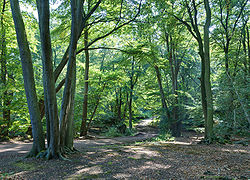Dick Turpin

Dick Turpin (1705 – 7 April 1739) was an English highwayman. He made a lot of money through many criminal activities, such as poaching, burglary, horse theft and murder. He is most famous for 'highway robbery', on his horse, Black Bess. He was eventually captured and hanged at York Castle in 1739.
Turpin was born in Hempstead, Essex. He was firstly believed to be involved with a gang of poachers, who stole and sold deer that belonged to the King. The rest of his gang were captured and hanged in 1735.
After this, Turpin started robbing rich people on the highways between cities. He did not stay in one place, so police could not catch up with him. He robbed people across the South of England. For a while, he tried to hide by calling himself John Palmer.
However, people were suspicious that he had a lot of money, and he was arrested for horse theft. He was charged with this offence and hanged in Knavesmire, York on 7 April 1739.
Dick Turpin Media
21 September 1705 entry of Turpin's name in the parish baptism register for Hempstead, Essex (fifth line down).
Epping Forest was a regular haunt of the Essex Gang.
William Powell Frith's 1860 painting of Claude Duval, a French highwayman in England, depicts a romanticised image of highway robbery.
Thomas Pelham-Holles, 1st Duke of Newcastle, pressed hard to have Turpin tried in London.
This gallows, at Tyburn, was similar in design to that used in York.
The gravestone that reputedly marks the location of Turpin's grave at Fishergate in York





